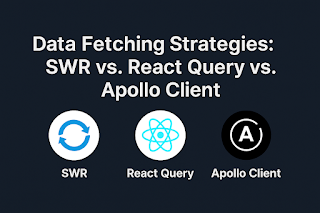GraphQL vs. REST: When to Use What?
As APIs continue to be the backbone of modern web and mobile applications, developers are often faced with a key decision: GraphQL or REST? While both serve the purpose of data exchange between client and server, they do so in fundamentally different ways.
So how do you choose the right one for your project? Let’s explore both technologies, their strengths and weaknesses, and when to use what.
What is REST?
REST (Representational State Transfer) is an architectural style that uses HTTP methods like GET, POST, PUT, and DELETE to interact with resources. It has been the de facto standard for APIs for years.
Pros of REST:
- Simplicity: Easy to understand and implement.
- Stateless: Each request contains all necessary information, enhancing scalability.
- Wide Adoption: Mature ecosystem, tools, and support.
- Caching: HTTP-level caching is straightforward.
Cons of REST:
- Over-fetching/Under-fetching: Clients often receive too much or too little data.
- Multiple Round-Trips: Gathering complex nested data may require multiple requests.
- Rigid Structure: Changes to data structure often require new endpoints.
What is GraphQL?
GraphQL, developed by Facebook, is a query language for APIs and a runtime for executing those queries with your existing data. Unlike REST, GraphQL lets clients ask exactly for the data they need, nothing more, nothing less.
Pros of GraphQL:
- Single Endpoint: One endpoint handles all queries and mutations.
- Precise Data Fetching: Clients define the structure and shape of the response.
- Strongly Typed Schema: Offers introspection and robust tooling.
- Efficient Data Loading: Reduces the need for multiple API calls.
Cons of GraphQL:
- Learning Curve: More complex than REST to learn and debug.
- Overhead for Simple APIs: Can be overkill for basic CRUD operations.
- Caching is Complex: No built-in HTTP caching like REST.
REST vs. GraphQL: A Side-by-Side Comparison

When to Use REST?
- You need a simple, lightweight API for basic CRUD operations.
- You're building a public API that benefits from HTTP caching and status codes.
- Your team is familiar with REST and has limited GraphQL experience.
- You have limited resources or time to implement and manage a complex schema.
When to Use GraphQL?
- Your frontend requires flexible and efficient data fetching (especially for SPAs or mobile apps).
- You're dealing with complex relationships or nested data.
- You want schema introspection, type safety, and powerful developer tooling.
- Your API evolves frequently and you want to avoid versioning overhead.
Real-World Examples
- GitHub and Shopify use GraphQL for their APIs due to its flexibility.
- Twitter, Stripe, and Slack continue to rely on REST for its simplicity and predictability.
Final Thoughts
There’s no one-size-fits-all solution when it comes to APIs. REST remains a strong choice for many applications due to its simplicity and widespread adoption. GraphQL, on the other hand, shines in projects that demand agility, performance, and fine-tuned control over data retrieval.
The best approach? Understand your project requirements, team expertise, and long-term goals. In some cases, you may even combine both!
#GraphQL #REST #API #WebDevelopment #Frontend #Backend #DeveloperTools #Programming #SoftwareArchitecture #TechTrends




Comments
Post a Comment